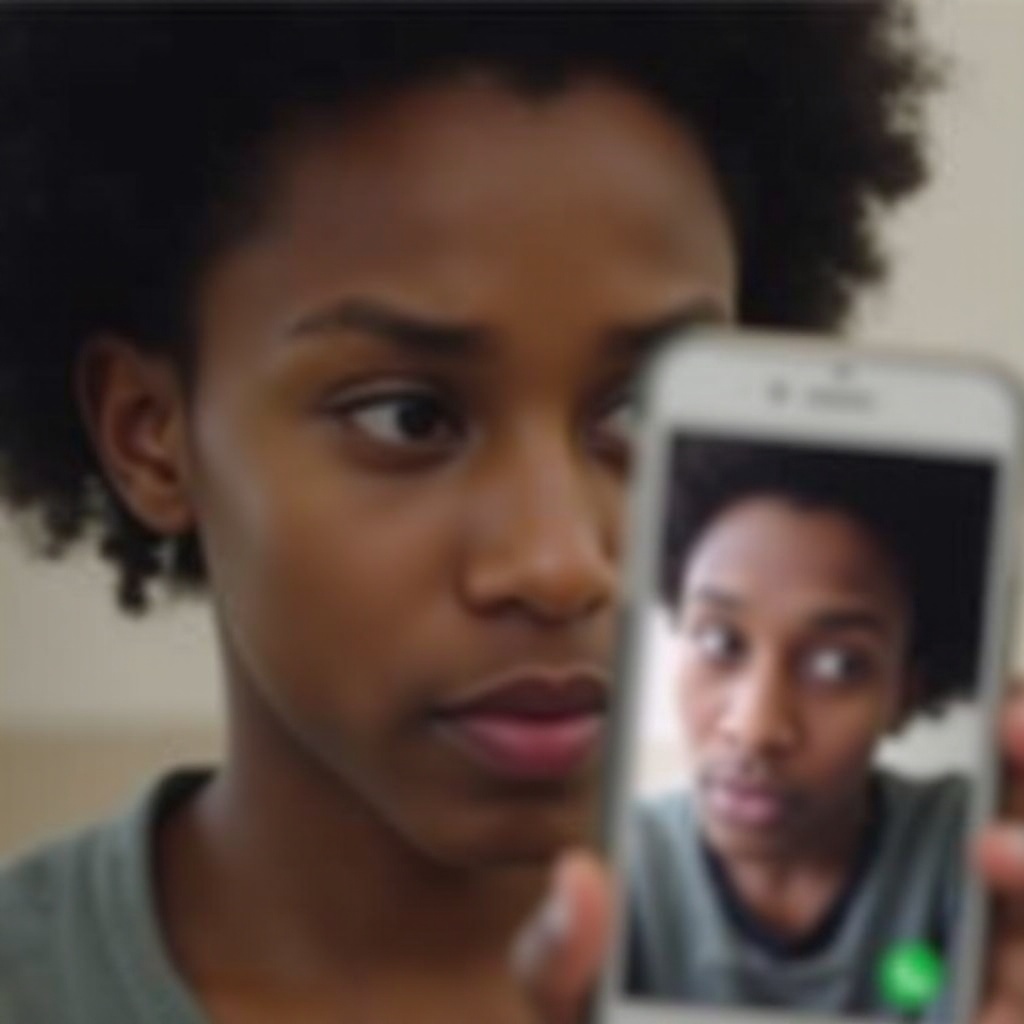Introduction
Struggling with an inverted camera on FaceTime? You’re not alone. This issue can be quite frustrating, especially during important video calls. Thankfully, there are effective ways to resolve this problem and enhance your FaceTime experience. In this blog, we’ll walk you through the process of identifying if your camera is inverted and provide you with a comprehensive, step-by-step guide to fix it. We’ll also cover advanced troubleshooting techniques and offer preventative measures to keep your camera functioning correctly in the future.

Understanding the Inverted Camera Issue on FaceTime
The inverted camera issue on FaceTime is a common problem that many users experience. When your camera is inverted, the image you’re broadcasting appears flipped or mirrored, which can be disorienting for both you and the person you’re calling. This issue can arise due to several reasons, including software glitches, outdated iOS versions, or incorrect camera settings. Understanding the root cause is the first step toward fixing the problem. We’ll delve deeper into this issue and help you get a clear understanding of how to tackle it.
Identifying If Your Camera Is Inverted
Before you start fixing the inverted camera on FaceTime, it’s essential to confirm that your camera is indeed inverted. Here’s how to identify the issue:
- FaceTime Call Observation: Initiate a FaceTime call and observe the video feed. If the image appears flipped or mirrored, you have an inverted camera issue.
- Built-In Camera App: Open your iPhone’s Camera app and switch to the front-facing camera. If the image looks normal here but appears inverted during FaceTime, the issue lies specifically within the FaceTime settings.
- Feedback from Others: Sometimes the other party may notice the issue before you. If someone mentions that your video appears flipped, you likely have an inverted camera on FaceTime.

Step-by-Step Guide to Fixing the Inverted Camera on FaceTime
Once you’ve identified the problem, it’s time to take action. Follow these steps to resolve the inverted camera issue:
Checking for Software Updates
- Open Settings: Go to the Settings app on your iPhone.
- Select General: Tap on ‘General.
- Tap Software Update: Check if there’s a new iOS update available.
- Update iOS: If an update is available, follow the on-screen instructions to download and install it. Software updates often fix bugs that could be causing the inverted camera issue.
Navigating FaceTime Settings
- Open Settings: Go back to the Settings app.
- Select FaceTime: Scroll down and tap on ‘FaceTime.
- Confirm Settings: Ensure that FaceTime is turned on. You might also want to toggle it off and then back on to refresh the app.
- Camera Options: Check if there are any specific camera settings within FaceTime that need adjustment.
Adjusting Camera Settings in iOS
- Open Settings: Launch the Settings app again.
- Select Camera: Scroll down and tap on ‘Camera.
- Mirror Front Camera: Look for a setting labeled ‘Mirror Front Camera’ and toggle it on or off to see if this resolves the problem.
- Reset All Settings: If the above steps don’t work, go back to ‘General’ and scroll down to ‘Reset’ -> ‘Reset All Settings.’ Note that this will reset all customized settings (like Wi-Fi passwords) but will not delete apps or data.
Advanced Troubleshooting Techniques
If the above steps haven’t resolved the issue, move on to these advanced troubleshooting techniques:
Restarting Your Device
- Power Off: Press and hold the power button until you see ‘slide to power off,’ then slide to turn off your device.
- Restart: Wait a few seconds, then press and hold the power button again until the Apple logo appears. Restarting your device can resolve many temporary glitches.
Reinstalling FaceTime
- Uninstall FaceTime: Press and hold the FaceTime app icon until you see the option to delete it. Tap ‘Delete.
- Reinstall App: Go to the App Store and search for FaceTime. Reinstall the app. This might clear out potential app-specific bugs causing the inverted camera issue.
Preventative Measures for Future
To avoid encountering the inverted camera issue in the future, consider these preventative measures:
- Regular Updates: Keep your iOS and all apps, including FaceTime, up-to-date to benefit from the latest bug fixes and improvements.
- Check Settings: Frequently review your FaceTime and camera settings to ensure everything is configured correctly.
- Restart Periodically: Restart your device every so often to clear temporary bugs and improve performance.
When to Seek Professional Assistance
If you’ve tried everything and your FaceTime camera remains inverted, it may be time to seek professional help. Visit an Apple Store or contact Apple Support for further assistance. They can diagnose any hardware-related issues that could be causing the problem and provide you with the necessary repairs or replacements.

Conclusion
Fixing the inverted camera on FaceTime doesn’t have to be a frustrating experience. By following the steps and troubleshooting techniques outlined in this guide, you should be able to resolve the issue effectively. Remember to keep your device updated and maintain regular checks to prevent similar problems in the future. If all else fails, professional assistance is available to get your camera back to working perfectly.
Frequently Asked Questions
How do I know if my FaceTime camera is inverted?
To identify if your FaceTime camera is inverted, start a FaceTime call and observe the video feed. If the image appears flipped or mirrored, your camera is inverted. You can also check using the front-facing camera in the Camera app and seek feedback from others.
What should I do if the inverted camera issue persists even after troubleshooting?
If the issue persists after trying all the troubleshooting steps, consider contacting Apple Support or visiting an Apple Store for professional assistance. There might be a hardware issue that requires expert attention.
Can third-party apps help in fixing the inverted camera on FaceTime?
While some third-party apps claim to fix camera issues, it’s best to stick with official troubleshooting steps and seek help from Apple Support. Third-party solutions may not always be reliable and could potentially cause more problems.

